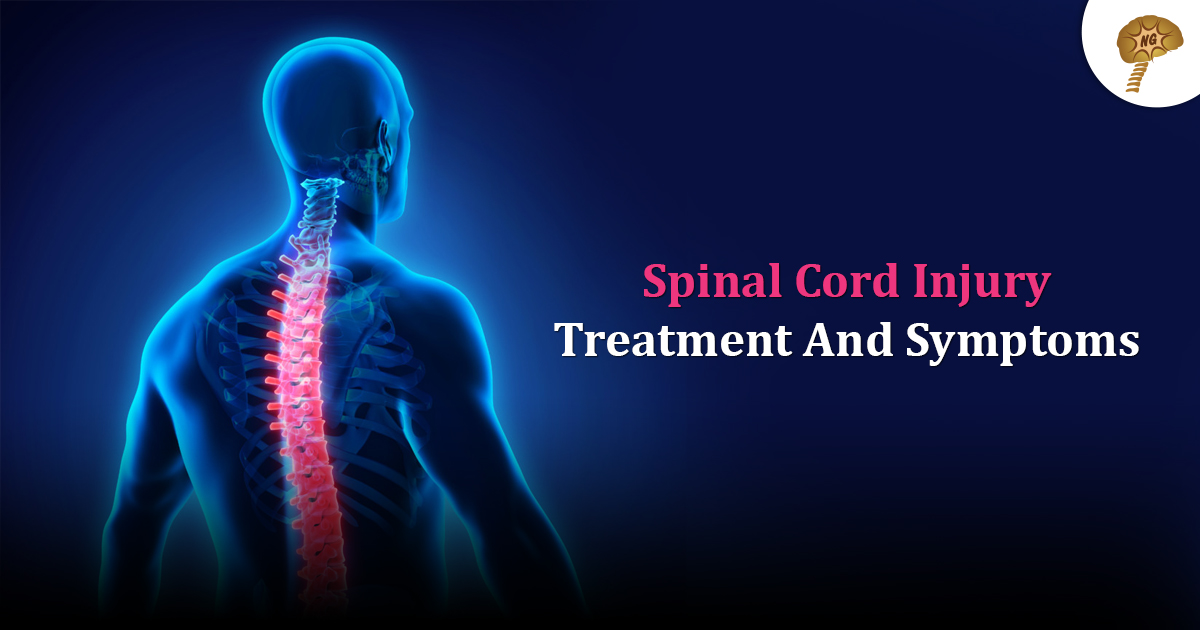
Damage to any area of the spinal cord or nerves at the ‘cauda equine’ causes permanent changes in sensation, strength and normal body functions. Thus, the effects of a spinal cord injury harm the person physically, emotionally, mentally and socially.
A spinal cord is responsible for transferring messages from the brain to various parts of the body and also from the body to the brain. If the spinal cord is injured, the result is a complete loss of sensation and movement below the site of injury.
A spinal cord injury is the result of a violent attack (stabbing or gunshot wound), road accidents, falling from a height, and injuries during sporting events.
Types and Symptoms
The ability to control the body and limb movements, after a spinal cord injury, depends on the area of the injury and the severity of damage. The severity of the ‘completeness’ of the injury is termed as either complete or incomplete.
Types
- Complete injury: There are complete sensory loss and the ability to control motor movement is lost below the site of the injury. At times a complete injury results in paralysis.
- Incomplete: The person has some motor or sensory functions retained below the area of the injury.
Paralysis from a spinal cord injury is termed as:
- Tetraplegia: Also called Quadriplegia, Tetraplegia paralysis affects the limbs, trunk, and pelvic organs.
- Paraplegia:In a spinal cord injury, Paraplegia paralysis is a loss of sensation, movement, and function of the trunk, legs, and pelvic organs.
Symptoms
A spinal cord injury results in one or more of the following symptoms:
- Extreme pain or pressure in the head, back or neck region
- An abnormally positioned neck
- Loss of sensation in hands or feet
- Loss of movement
- Difficulty balancing and walking
- Inability to feel varying temperatures such as heat and cold
- Loss of bowel or bladder control
- Spasms
- Sexual dysfunction due to loss in sexual sensitivity
- Difficulty while breathing or clearing secretions from the lungs
Treatment
When a person with a traumatic spinal cord injury arrives at Neurogen BSI, he/she undergoes a physical and neurological examination. This helps the doctors to determine the size and severity of the injury. Some of the diagnosis tools include:
- CT scan
- X-rays of the spine
- MRIs
Other examinations are also done to measure the time frame in which the nerve signals reach the brain.
Spinal Cord Repair With Stem Cells
There is no complete spinal cord injury treatment available, still, stem cells hold the keys to a successful repair where it can help a paralyzed person to regain some of the lost senses again.
The neurosurgeons at Neurogen BSI harness autologous stem cells from the bone marrow of the patient and later transplant them into the spinal cord area intrathecally. These specialized cells enable nerve fibres to renew constantly. In a complete spinal cord injury, where the cord is completely severed, a spinal cord injury treatment with stem cells, the growth factors emitted from the stem cells facilitate the growth of the detached ends of the nerve fibres and eventually joins them together.
Rehabilitation programs of a spinal cord injury treatment combine physical therapy with skill-building exercises and activities. The physical therapists work to regain the lost leg and arm strength and mobility with assistive devices such as leg braces, walkers, and wheelchairs.








